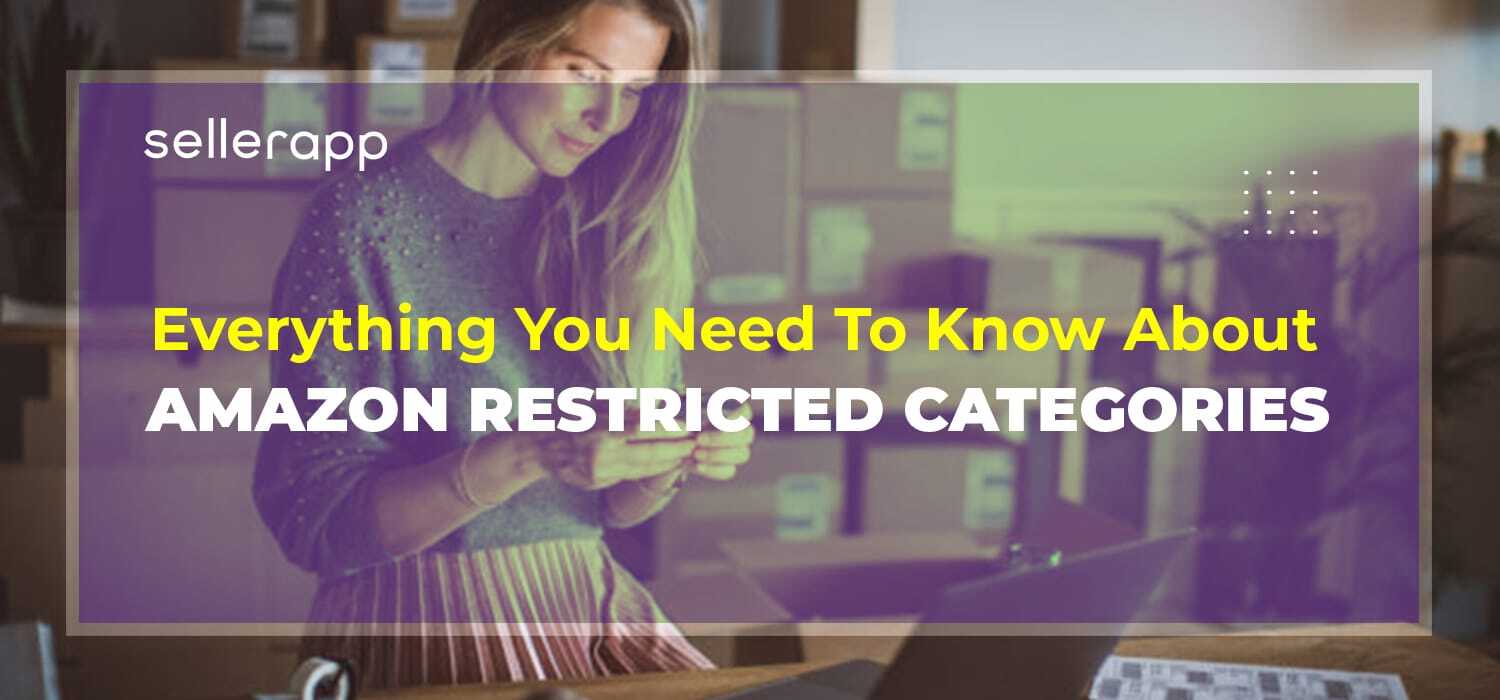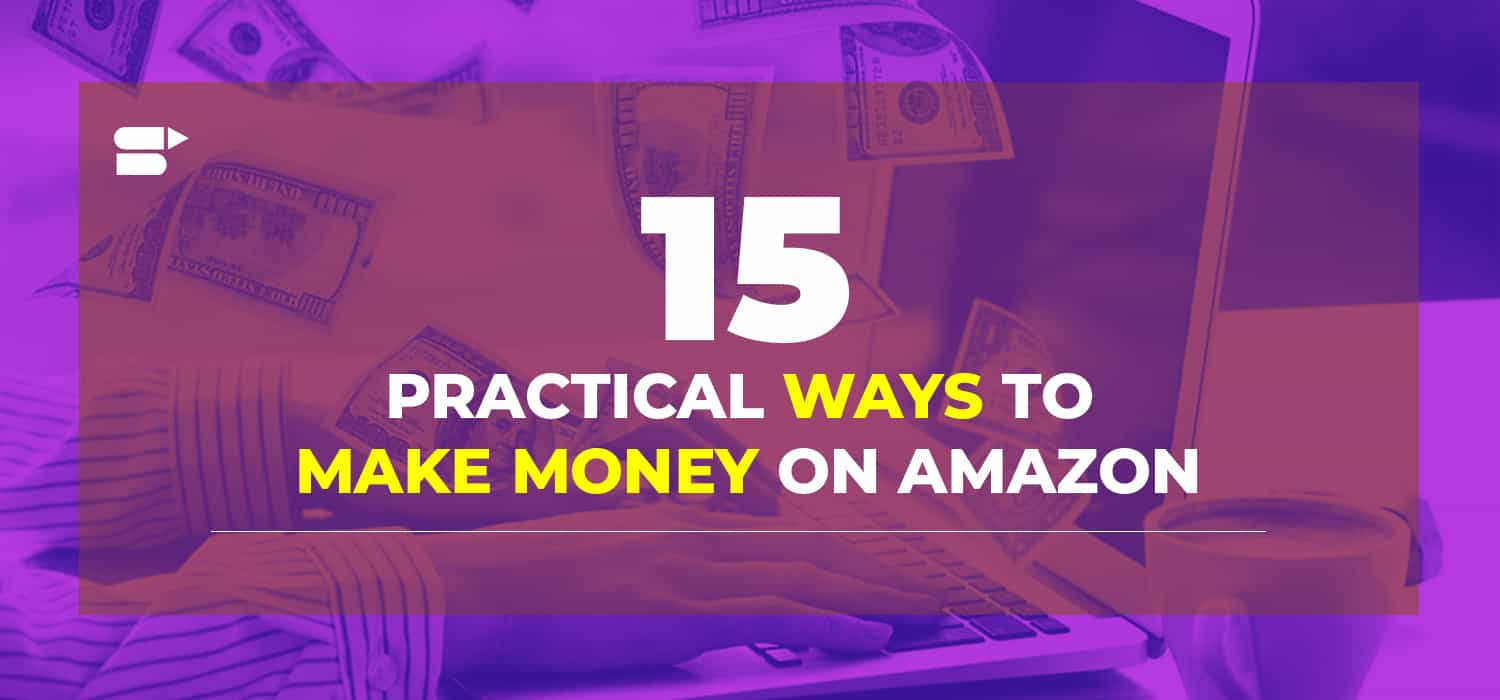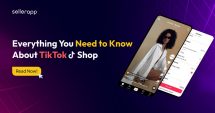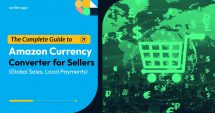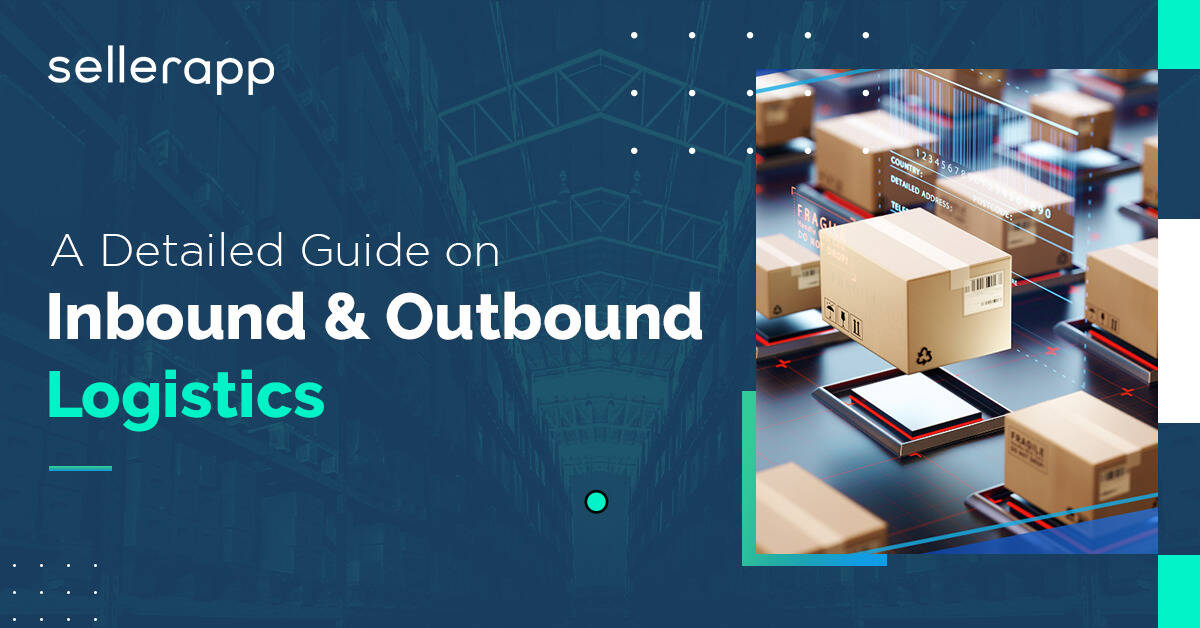15 E-commerce Marketing Strategy: Driving Growth in a Digital Marketplace
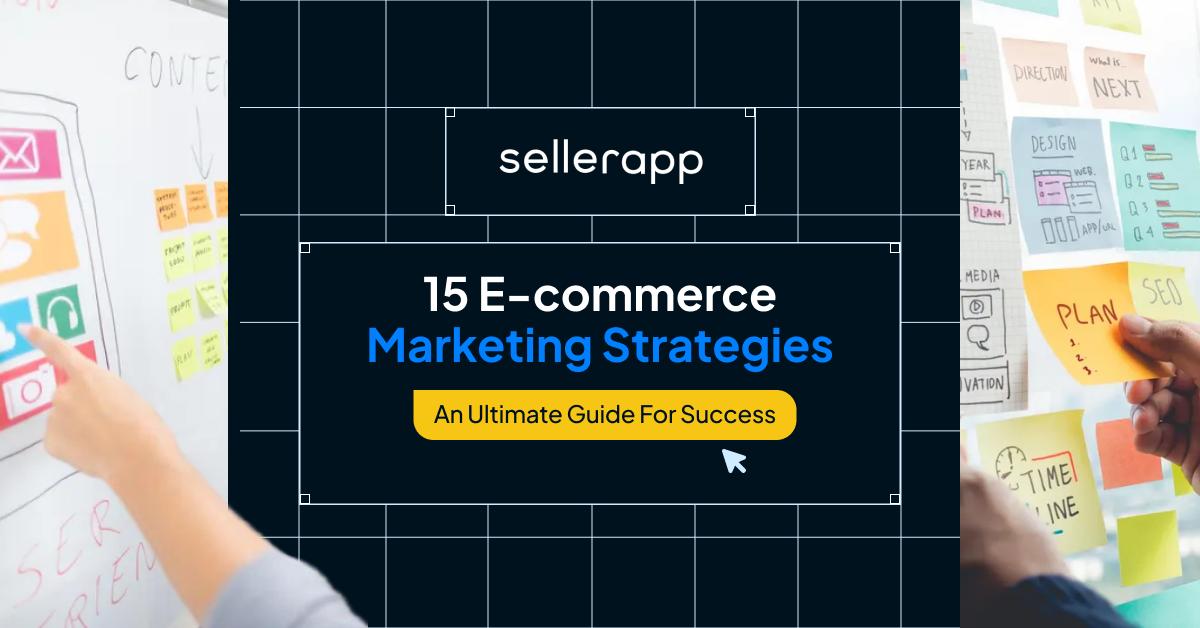
In the super competitive world of e-commerce, effective marketing strategies are crucial for driving traffic, converting visitors into loyal customers, and fostering long-term brand loyalty.
In 2024, standing out as a brand requires a blend of creativity, data-driven insights, and a deep understanding of your target audience.
In this guide, we’ve included 15 advanced e-commerce marketing strategies that can help elevate your online business. These proven tactics provide a comprehensive approach to attracting, engaging, and converting customers.
Whether you’re just starting or looking to refine your existing marketing tactics, these insights will empower you to enhance your online presence and boost sales.
Quick Guide
- What is an E-commerce Marketing?
- E-commerce Marketing vs. E-commerce Advertising
- Types of e-commerce marketing
- 15 Successful E-commerce Marketing Strategies
- Run PPC Campaign
- Optimize your e-commerce website’s layout
- Start a Content Marketing Program
- Capture More Email Subscribers
- Create a TikTok Marketing Strategy
- Run an Influencer Marketing Campaign
- Leverage User-Generated Content
- Optimize for Mobile
- Retargeting
- Optimize your Product Pages
- Host Live and Virtual Events
- Collaborate with Guest Bloggers
- Prevent Out-of-stock Inventory
- Use Chatbots for Sales Promotion
- Build loyalty into your strategy
What is an E-commerce Marketing?
E-commerce marketing is the practice of promoting an online store or products through various digital marketing tactics to attract potential customers, convert them into buyers, and retain them for repeat business.
This includes e-commerce marketing strategies like Search Engine Optimization (SEO), Pay-Per-Click (PPC) advertising, social media marketing, email marketing, and content marketing to drive traffic and sales.
For example, an online store selling organic skincare products might use SEO to rank higher for keywords like “natural face cream.”
They will also engage with customers on Instagram by posting skincare tips and product promotions and sending email newsletters with exclusive discounts and skincare advice to keep customers coming back.
The store can effectively reach and retain a larger audience by integrating these e-commerce marketing strategies.
E-commerce Marketing vs. E-commerce Advertising
There is a difference between E-commerce Marketing and E-commerce Advertising in terms of promoting an online store.
As mentioned above, e-commerce marketing encompasses a broad range of strategies aimed at attracting, converting, and retaining customers. These strategies focus on understanding and enhancing every stage of the digital customer journey to ensure a seamless experience from discovery to purchase and beyond. Whereas, when it comes to e-commerce advertising, it is the subset of e-commerce marketing.
Let’s understand e-commerce advertising in detail.
E-commerce Advertising
E-commerce advertising is a subset of e-commerce marketing focused specifically on paid promotional efforts to drive traffic to the online store.
This includes Pay-Per-Click (PPC) advertising, display ads, social media ads, and sponsored content. The primary objective is to generate immediate visibility and conversions through targeted ads.
Let’s look at an example,
An online clothing store runs PPC campaigns on Google Ads targeting keywords like “buy summer dresses online,” displays retargeting ads to website visitors on Facebook, and collaborates with influencers for sponsored posts to quickly attract potential buyers.
E-commerce advertising specifically refers to the use of paid promotions to drive immediate traffic and sales.
Types of E-commerce Advertising
E-commerce marketing encompasses a variety of strategies aimed at attracting, engaging, and converting online customers.
These e-commerce marketing strategies can be broadly categorized into organic and paid channels, each serving distinct purposes in driving traffic and sales.
Organic E-commerce Marketing
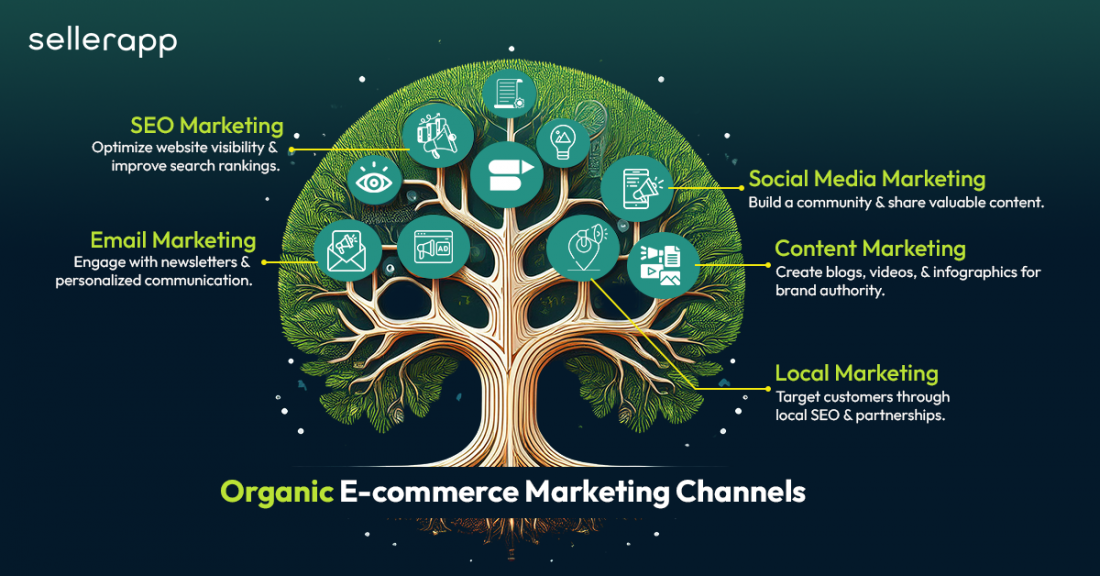
- Social Media Marketing: Using social media platforms such as Facebook, Instagram, Twitter, and LinkedIn to build a community, share valuable content, and interact with customers organically. This includes creating posts, and stories, and engaging with followers without paid promotion.
- Content Marketing: Creating and distributing valuable, informative content such as blogs, videos, infographics, and guides to attract and educate your target audience. Organic content marketing focuses on SEO, providing value to users and enhancing brand authority.
- Email Marketing: Building and nurturing relationships with customers through email campaigns, newsletters, and personalized communication. This involves segmenting email lists, crafting engaging content, and leveraging automation to deliver relevant messages.
- SEO Marketing: Optimizing your e-commerce website and content to improve visibility in search engine results pages. This includes keyword research, on-page optimization, link building, and improving site speed and user experience.
- Local Marketing: Targeting customers in specific geographical locations through local SEO tactics, local business listings, community engagement, and partnerships with local influencers or organizations.
Paid E-commerce Marketing
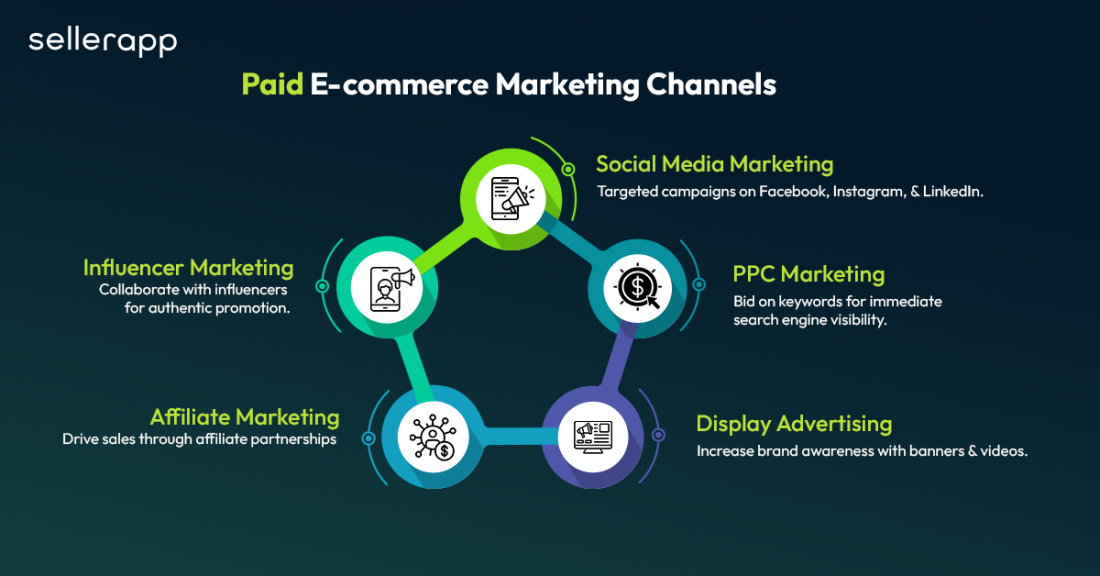
- Social Media Marketing: Running targeted advertising campaigns on social media platforms to reach specific demographics, promote products or services, and drive traffic to your e-commerce site. Includes options like Facebook Ads, Instagram Ads, and LinkedIn Ads.
- PPC Marketing: Pay-per-click advertising on search engines like Google or Bing, where advertisers bid on keywords related to their products or services. PPC ads appear at the top of search results and can drive immediate traffic and conversions.
- Display Advertising: Placing banner or video ads on third-party websites, apps, or social media platforms to increase brand awareness and attract potential customers. Display ads can be targeted based on demographics, interests, or browsing behavior.
- Influencer Marketing: Collaborating with influencers or content creators who have a large and engaged following to promote your products or services. Influencer partnerships can help reach new audiences and build credibility through authentic recommendations.
- Affiliate Marketing: Partnering with affiliates or publishers who promote your products on their platforms in exchange for a commission on sales. Affiliate marketing leverages the affiliate’s audience and can drive targeted traffic to your e-commerce site.
By strategically integrating both organic and paid e-commerce marketing strategies, businesses can effectively reach their target audience, drive engagement, and achieve sustainable growth in the competitive online marketplace.
Each channel offers unique advantages and should be tailored to align with business goals, customer preferences, and budget considerations.
15 Successful E-commerce Marketing Strategies
To determine the best e-commerce marketing strategies for your business, consider the following questions:
- What are your primary business goals and objectives?
- Are you focused on increasing sales, expanding market share, launching new products, or something else?
- Who is your target audience?
- What are your audience demographics, behaviors, and purchase habits? Have you developed detailed buyer personas?
- What are your unique selling propositions compared to competitors?
- Why should customers choose you over other options?
Your answers to these questions will guide you in choosing the most effective marketing tactics for your needs.
Since e-commerce is a vast industry with diverse products, business models, and target groups, there’s no one-size-fits-all solution.
Different e-commerce marketing strategies work for different sellers based on their unique circumstances.
Below are some effective e-commerce marketing strategies to help you develop and refine your e-commerce marketing strategy:
1.Run PPC Campaigns
Running a Pay-Per-Click (PPC) advertising campaign is a strategic approach for e-commerce businesses to drive targeted traffic to their website and generate immediate sales. This hands down one of the most effective e-commerce marketing strategies.
PPC ads appear prominently at the top of search engine results pages when users search for specific keywords related to your products or services.
For example, consider an outdoor gear retailer specializing in hiking and camping equipment. They can launch a PPC campaign targeting keywords such as “hiking backpacks,” “camping tents,” and “outdoor gear.” By bidding on these relevant keywords, the retailer ensures their ads are displayed to potential customers who are actively searching for products in these categories.
To maximize the effectiveness of a PPC campaign, it’s crucial to create compelling ad copy that highlights key selling points, such as product features, benefits, and any special promotions or discounts. Including high-quality product images in the ads can also capture the attention of users and showcase the quality and appeal of the products being advertised.
Furthermore, directing users to a well-optimized landing page that aligns with the ad’s messaging and offers a seamless user experience is essential for converting clicks into sales.
For example, the retailer could create dedicated landing pages for each product category mentioned in their PPC ads, ensuring that visitors find relevant information quickly and are encouraged to make a purchase. Although a really good Seller tool such as SellerApp can do this, larger brands may need to depend on an accurate and highly effective ecommerce data API.
Additionally, continuously monitoring the performance of PPC campaigns, adjusting bids, testing different ad variations, and analyzing conversion metrics are crucial steps in optimizing campaign effectiveness and maximizing return on investment (ROI).
2.Optimize Your E-commerce Website’s Layout
Optimizing the layout of your e-commerce website is one of the best e-commerce marketing strategies when it comes to enhancing user experience, increasing engagement, and driving conversions.
Start by designing a visually appealing and inbuilt homepage that captures visitors’ attention immediately. Alternatively, if you’d like to maximize your profits and save time, you can choose a ready-to-use eCommerce website template to have your site fully designed in just a few minutes.
For example, a fashion brand could create a modern layout with large, high-resolution hero images that showcase its latest collection or seasonal offerings. These images should be accompanied by clear calls-to-action (CTAs) that guide visitors toward exploring products or taking advantage of current promotions.
Next, ensure easy navigation throughout the website by organizing products into categories and subcategories that are logical and easy to access. Implement a user-friendly search function that allows visitors to quickly find specific products based on keywords or filters.
Each product page should feature detailed descriptions, high-quality images from multiple angles, and customer reviews to provide comprehensive information and build trust with potential buyers.
Moreover, prominently display your unique value proposition (UVP) and any competitive advantages, such as free shipping, hassle-free returns, or exclusive discounts for first-time buyers, to differentiate your brand and incentivize purchases.
Continuously monitor website analytics and conduct A/B testing to optimize layout elements, CTAs, and navigation paths based on user behavior and conversion data.
By optimizing your e-commerce website’s layout to prioritize visual appeal, user-friendliness, and conversion optimization, you create a seamless shopping experience that encourages visitors to explore, engage, and ultimately make purchases.
3.Start a Content Marketing Program
Launching a content marketing program is a strategic initiative for e-commerce businesses to attract and engage potential customers, establish authority in their industry, and drive organic traffic to their websites.
Content marketing involves creating and distributing valuable, relevant, and consistent content that addresses the interests, pain points, and needs of your target audience.
For example, consider a home decor seller aiming to increase brand awareness and attract homeowners interested in interior design. They could develop a content strategy that includes blog posts, videos, infographics, and downloadable guides focused on topics such as “Top 10 Interior Design Trends for 2024,” “How to Choose the Perfect Area Rug,” or “DIY Home Makeover Ideas Using Sustainable Decor.”
The key to successful content marketing lies in providing genuine value and addressing the informational needs of your audience while subtly showcasing your brand’s products or services.
For example, the home decor retailer could create blog posts featuring room makeover projects using their furniture and accessories, accompanied by before-and-after photos and practical decorating tips.
By consistently producing high-quality content that educates, inspires, or entertains your audience, you not only position your brand as a trusted resource but also improve your search engine rankings over time.
Furthermore, use different distribution channels to maximize the reach of your content, such as social media platforms, email newsletters, and partnerships with influencers or industry experts who can amplify your message to their followers. Reaching a wider audience often means connecting with people who speak different languages or come from different cultural backgrounds. In such cases, relying on the best website localization services can make a real difference. Localization ensures that your tone, messaging, and visuals feel natural and relevant to each audience, rather than being simple translations of your original content. This not only helps build trust but also improves user experience across regions. Encourage engagement and interaction with your content by inviting readers to leave comments, share their own experiences, or participate in contests or polls related to your industry.
This approach not only strengthens brand loyalty but also establishes your authority in the marketplace, setting the stage for sustained growth and success in competitive digital environments. Most importantly, content marketing is the core of all successful e-commerce marketing strategies.
4.Capture More Email Subscribers
Capturing more email subscribers is a fundamental strategy for e-commerce businesses to build a direct line of communication with potential and existing customers, drive repeat purchases, and increase customer lifetime value.
Start by implementing compelling opt-in incentives that encourage visitors to subscribe to your email list.
For example, a beauty brand could offer a 15% discount on the first purchase for new subscribers or provide exclusive access to skincare tips and makeup tutorials through a free downloadable e-book.
To effectively capture email subscribers, strategically place opt-in forms throughout your website, including on the homepage, product pages, and during checkout. Use clear and attractive calls-to-action (CTAs) that highlight the benefits of subscribing, such as staying informed about new product launches, upcoming sales events, or receiving exclusive offers.
Ensure the opt-in process is simple and user-friendly, requiring minimal information from subscribers to maximize conversion rates.
Once you’ve built a substantial email list, segment your subscribers based on demographics, purchase history, or browsing behavior to send targeted and personalized email campaigns.
Send customized skincare product recommendations or special offers on makeup products that complement previous purchases based on customer preferences. Personalizing your emails enhances the relevance and encourages engagement, leading to higher open rates, click-through rates, and ultimately, conversions.
Additionally, continuously optimize your email marketing strategy by testing different incentives, CTAs, and email content formats to identify what resonates best with your audience.
Monitor key metrics such as open rates, click-through rates, and unsubscribe rates to gauge the effectiveness of your campaigns and make data-driven adjustments accordingly.
By focusing on capturing more email subscribers and nurturing them through targeted and personalized email communications, e-commerce businesses can cultivate strong customer relationships, drive sales, and foster long-term loyalty among their audience.
This proactive approach not only enhances brand visibility but also maximizes the ROI of marketing efforts by leveraging a direct and cost-effective channel for engagement and conversion.
5.Create a TikTok Marketing Strategy
Creating a TikTok marketing strategy presents e-commerce brands with an opportunity to engage with a highly engaged audience through creative and entertaining short-form videos.
Start by identifying your target audience on TikTok and understanding the type of content that resonates well on the platform.
For example, a clothing retailer could use TikTok to showcase their latest fashion collections through engaging challenges or trends, such as the popular #TryOnHaul challenge. In this challenge, customers are encouraged to create and share videos of themselves trying on the brand’s latest styles, showcasing fit, quality, and styling tips. This not only encourages user-generated content but also provides authentic social proof that can influence potential customers.
To maximize the impact of your TikTok marketing efforts, collaborate with popular TikTok creators or influencers who align with your brand’s values and target demographic.
Partnering with influencers can help amplify your reach, increase brand awareness, and build credibility among their loyal followers. For example, the clothing retailer could collaborate with a fashion influencer known for their style tips and fashion-forward content. The influencer can create engaging videos featuring the brand’s products in unique and creative ways, reaching a broader audience that may not be familiar with the brand initially.
With TikTok, e-commerce brands can effectively run several e-commerce marketing strategies that drive brand awareness, increase engagement, and ultimately drive traffic and sales to their e-commerce websites by consistently creating valuable and entertaining content that aligns with their brand identity and resonates with users.
6.Run an Influencer Marketing Campaign
Running an influencer marketing campaign involves partnering with influential individuals on social media or industry experts to promote your products or services.
These influencers have established credibility and large followings that trust their recommendations, making them effective advocates for your brand. Moreover, when leveraged right, these influencers can be an essential part of your e-commerce marketing strategies.
For example, imagine a fashion e-commerce brand launching a new line of sustainable clothing. They could collaborate with a popular fashion influencer known for promoting eco-friendly fashion choices. The influencer could create content such as Instagram posts, Stories, or YouTube videos showcasing the brand’s sustainable practices, highlighting the quality and style of the clothing line, and sharing their personal experience with the products. Their followers, who admire their style and trust their recommendations, are likely to be influenced to visit the brand’s website and make purchases.
This not only expands the brand’s reach to a targeted audience but also enhances brand credibility through authentic endorsements.
Moreover, by tracking metrics such as engagement rates, website traffic, and sales generated from the campaign, the brand can measure the effectiveness of the influencer partnership and optimize future e-commerce marketing strategies accordingly.
7.Leverage User-Generated Content
Leveraging user-generated content (UGC), often sourced from various UGC platforms, is still one of the most powerful e-commerce marketing strategies out there. Not only does it tap into the authenticity and influence of your existing customers but it is also that necessary social proof that can take your brand to the next level.
By encouraging customers to share photos, videos, reviews, and testimonials of your products on social media, you can build social proof, increase brand trust, and foster community engagement.
For example, consider an outdoor adventure gear retailer that launches a campaign encouraging customers to share their hiking or camping experiences using the brand’s equipment. Customers post photos of their outdoor adventures on Instagram with a specific hashtag provided by the retailer. The retailer then features these user-generated posts on their website, social media channels, or even in email newsletters. This not only showcases the products in real-life scenarios but also creates a sense of community among like-minded outdoor enthusiasts.
To activate participation, the retailer could run a contest where participants with the best photos or most creative posts win prizes such as store credit, free gear, or exclusive discounts.
By amplifying UGC across various channels, the retailer not only boosts engagement but also attracts new customers who are influenced by authentic testimonials and visual proof of product quality and usability.
Moreover, UGC campaigns can generate valuable insights into customer preferences and behaviors, allowing the retailer to refine marketing strategies and product offerings based on real customer experiences and feedback.
8.Optimize for Mobile
Optimizing your e-commerce website for mobile devices is essential in today’s digital landscape, where a significant majority of consumers browse and shop using smartphones and tablets.
To effectively cater to mobile users, ensure your website loads quickly, features a responsive design that adapts to different screen sizes, and provides an intuitive navigation experience.
For instance, imagine a fashion retailer optimizing their mobile site by implementing a streamlined checkout process with minimal form fields and clear calls-to-action (CTAs). This enhances user experience by reducing friction and making it easy for customers to complete purchases on their mobile devices without encountering usability issues.
Additionally, prioritize mobile-friendly design elements such as large, high-resolution product images, and concise product descriptions that are easy to read and interact with on smaller screens.
By focusing on mobile optimization, e-commerce businesses can capitalize on the growing trend of mobile shopping, improve conversion rates, and ultimately enhance customer satisfaction by delivering a seamless and enjoyable shopping experience across all devices.
9.Retargeting
Retargeting is a strategic e-commerce marketing tactic aimed at re-engaging potential customers who have shown interest in your products or services but did not complete a purchase during their initial visit to your website. When executed correctly, it can be one of the most effective e-commerce marketing strategies out there.
By deploying cookies and tracking pixels, e-commerce businesses can identify users who have browsed specific product pages or added items to their shopping carts without checking out.
Subsequently, personalized ads related to these products can be displayed to these “warm” leads as they continue to browse other websites or social media platforms.
For example, consider an online electronics retailer that implements a retargeting campaign targeting users who visited their website and viewed a particular model of a smartphone but did not proceed with the purchase.
The retailer can display targeted ads showcasing the smartphone model along with compatible accessories or special promotions, such as free shipping or a limited-time discount.
By reminding these potential customers of their initial interest and addressing any potential hesitations, retargeting aims to bring them back to the website and encourage them to complete the purchase.
This approach not only increases the likelihood of conversion but also maximizes the return on investment (ROI) of digital advertising spend by focusing on users who have already demonstrated intent and familiarity with the brand.
10.Optimize Your Product Pages
Optimizing e-commerce product pages is crucial for maximizing conversion rates and enhancing the overall shopping experience for customers.
Start by ensuring each product page features high-quality images that showcase the product from multiple angles and in different contexts, such as lifestyle settings or close-up details.
For example, an outdoor gear brand could display hiking backpacks in use on mountain trails or camping tents pitched in scenic outdoor locations. These images not only illustrate the product’s features but also help potential customers envision themselves using it.
Next, provide comprehensive and informative product descriptions that highlight key features, materials used, sizing guides, and any unique selling points. Including detailed technical specifications can cater to customers who are more focused on functionality and performance.
Moreover, integrating customer reviews and testimonials directly on the product page can build trust and provide social proof, influencing purchase decisions positively.
For instance, featuring reviews from outdoor enthusiasts who have used the gear in various weather conditions or terrains can reassure potential buyers about the product’s durability and performance.
Lastly, optimize the layout of your product pages for clarity and ease of navigation. Ensure that essential information such as pricing, availability, and shipping options are prominently displayed. Clear and compelling calls-to-action (CTAs), such as “Add to Cart” or “Buy Now,” should guide users towards making a purchase seamlessly. By continuously monitoring and testing different elements of your product pages, such as CTA placement, image quality, and content layout, you can refine your approach to better meet customer expectations and improve conversion rates over time.
11.Host Live and Virtual Events
Hosting live and virtual events enables businesses to connect with their audience in a more engaging and personalized manner. For hybrid setups, companies can use on-demand meeting rooms to add a professional in-person element alongside their virtual sessions.
These events, such as webinars, product launches, or Q&A sessions, provide platforms for showcasing products, demonstrating their features, and addressing customer queries directly.
For instance, imagine an outdoor gear retailer launching a new line of camping equipment. They could host a live webinar where outdoor enthusiasts join to learn about the latest gear innovations, watch product demonstrations, and ask questions to experts in real time.
This not only educates potential customers about the product’s benefits but also creates excitement and a sense of community around the brand.
By using live and virtual events, e-commerce businesses can build stronger relationships with their audience, boost brand awareness, and ultimately drive conversions by providing valuable, interactive experiences that resonate with their target market.
12.Collaborate with Guest Bloggers
Collaborating with guest bloggers is aimed at expanding reach, enhancing credibility, and driving traffic to your online store. By partnering with influential bloggers or experts in your industry, you can influence their established audience and authority to introduce your products to a new and engaged audience segment.
For example, imagine a skincare brand collaborating with a beauty influencer who has a large number of followers on YouTube and Instagram. The influencer could create content such as skincare routines featuring the brand’s products, share honest reviews, or provide tips on achieving healthy skin. This exposure not only introduces the brand to a wider audience but also builds trust among potential customers who value the influencer’s recommendations.
Additionally, guest blog collaborations can earn valuable backlinks to your e-commerce site, boosting your SEO efforts and improving your site’s authority in search engine rankings.
Overall, partnering with guest bloggers allows e-commerce businesses to tap into existing communities, increase brand visibility, and drive qualified traffic that is more likely to convert into loyal customers.
13.Prevent Out-of-Stock Inventory
This e-commerce strategy is aimed at improving customer satisfaction, reducing lost sales, and maintaining trust with your audience.
By displaying real-time inventory levels on product pages and offering back-in-stock notifications, e-commerce stores can effectively manage customer expectations and encourage timely purchases.
For example, consider an online electronics retailer selling the latest smartphones. On their product pages, they prominently display the current stock availability, such as “Only 5 left in stock,” alongside a button for customers to sign up for notifications when the item is back in stock.
This approach not only creates a sense of urgency among potential buyers but also allows the retailer to capture leads for future sales.
Moreover, by consistently updating inventory levels and promptly notifying customers when items are restocked, the retailer builds credibility and reinforces their commitment to customer satisfaction.
Ultimately, this strategy helps e-commerce businesses optimize sales opportunities, minimize revenue loss from stockouts, and enhance overall shopping experiences for their customers.
14.Use Chatbots for Sales Promotion
Integrating chatbots into an e-commerce site is a strategic move to enhance customer interaction and drive sales through personalized assistance and automation.
Chatbots can provide immediate responses to customer inquiries, recommend products based on their preferences and browsing history, and guide them through the purchasing process.
For example, imagine a beauty brand offering a wide range of skincare products. They could implement a chatbot on their website that engages visitors with questions about their skin type, concerns, and current skincare routine. Based on the customer’s responses, the chatbot can suggest suitable products, provide usage tips, and even offer exclusive promotions or discounts to encourage immediate purchases.
This personalized approach not only improves the customer experience by providing relevant information but also increases conversion rates by simplifying the decision-making process.
Furthermore, chatbots can gather valuable data about customer preferences and behaviors, enabling the brand to refine its e-commerce marketing strategies, implement targeted promotions, and effectively retarget customers in future campaigns.
15.Build Loyalty into Your Strategy
It is crucial to implement robust loyalty programs to increase customer retention rates and improve overall customer lifetime value.
By offering rewards, exclusive offers, and personalized experiences, businesses can incentivize repeat purchases and strengthen their relationship with customers.
For instance, consider a sporting goods retailer that launches a loyalty program where customers earn points for every dollar spent on their website. These points can be redeemed for discounts on future purchases or exclusive access to member-only sales events.
To further engage customers, the retailer could provide additional perks such as early access to new product launches, personalized recommendations based on past purchases, and educational content on fitness and outdoor activities.
By delivering ongoing value beyond transactions, such as informative blog posts, video tutorials, or a community forum where customers can share experiences and tips, the retailer not only enhances customer satisfaction but also builds a sense of belonging among its loyal customer base.
This comprehensive approach to loyalty not only encourages repeat business but also turns satisfied customers into brand advocates who actively promote the business through word-of-mouth and social sharing, thereby driving organic growth and long-term success.
Conclusion
These 15 proven e-commerce marketing strategies that we’ve covered offer a comprehensive toolkit for businesses looking to thrive in the competitive online marketplace.
By implementing tactics such as running PPC campaigns, optimizing website layouts, starting content marketing programs, capturing email subscribers, and creating TikTok marketing strategies, brands can enhance their online presence and engage with their audience in meaningful ways.
Each of these e-commerce marketing strategies is designed to address specific aspects of the customer journey, from awareness and consideration to conversion and retention.
By using these tactics to your unique business goals, market conditions, and target audience, you can create a robust and adaptable marketing plan that drives sustained growth and success.
Additional Readings:
Launch a Wildly Profitable Ecommerce Business
Best 12 Online Selling Platforms for E-commerce Brands and Sellers
Top 10 Essential Ecommerce Pricing Strategies To Beat Your Competition
50+ Essential E-commerce KPIs Every CXO Should Monitor
Amazon Competitors Giving the Ecommerce Giant a Run for its Money
Ecommerce Branding: The Blueprint to Build Your Brand Image
Best eCommerce Niches: How to Find the Most Profitable eCommerce Niches in 2025



